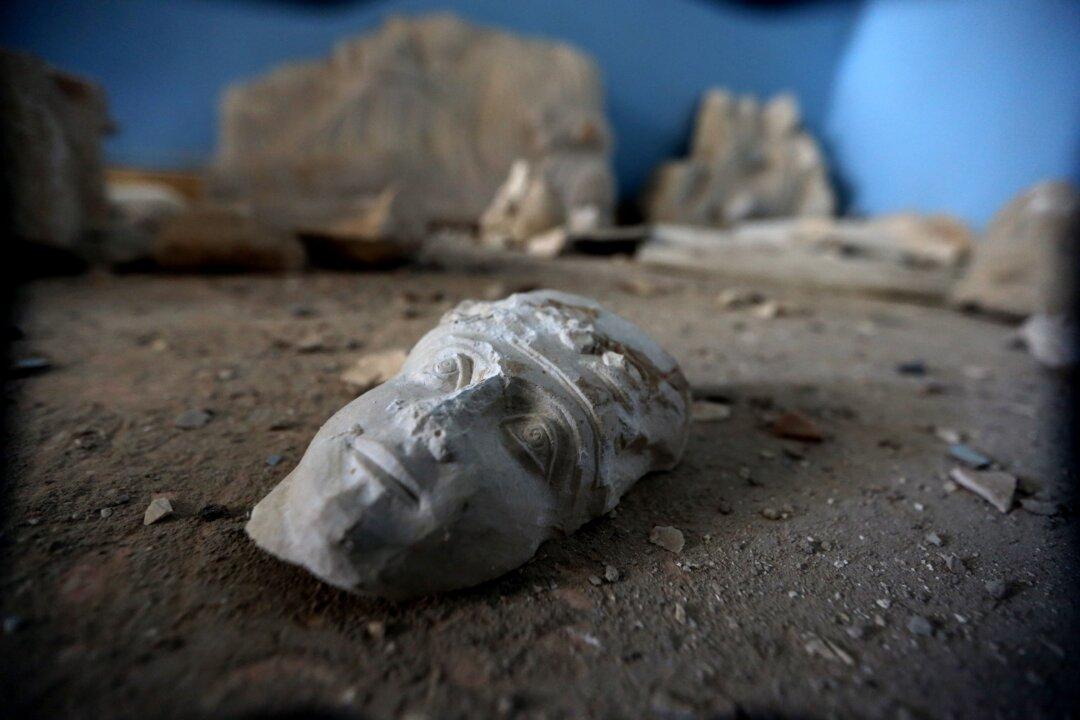DAMASCUS, Syria—Experts back from assessing damage at the museum in Palmyra offered grim new details Saturday about the extent of the destruction caused by the Islamic State group during the 10 months it controlled the ancient town.
The museum was trashed and some of its best-known artifacts and statues were smashed by the extremists, who cut off the heads and hands of statues and demolished others before being driven out last month.

Beheaded statues are seen on the ground in the destroyed museum in the Syrian ancient city of Palmyra on March 31, 2016. Joseph Eid/AFP/Getty Images





